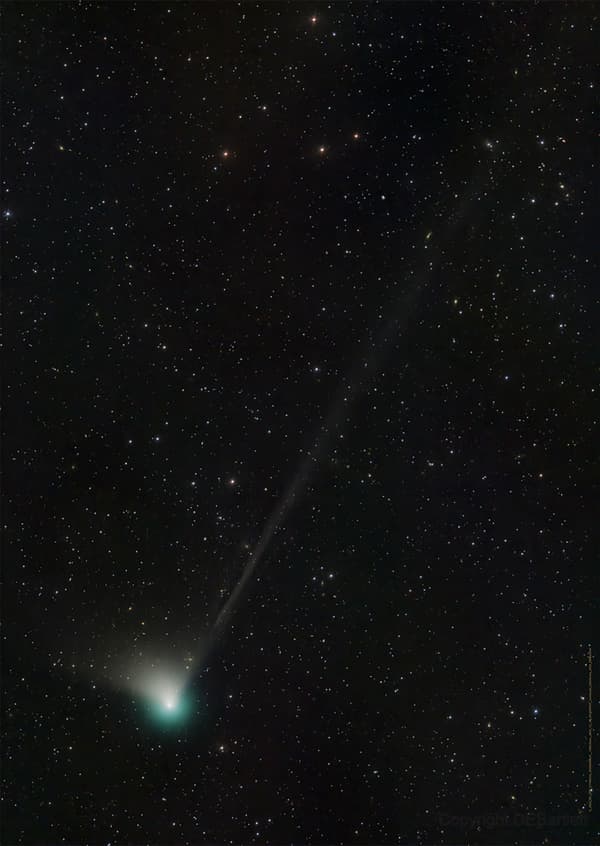Its last visit dates back 50,000 years: the recently discovered comet “C/2022 E3 (ZTF)” from the far reaches of the solar system will pass close to the Sun this week and will be visible to the naked eye at the end of January.
The small rocky and icy body, estimated to be around 1 kilometer in diameter, was discovered in March 2022 by the Zwicky Transient Facility (ZTF) astronomical sky survey program operating the Samuel-Oschin Telescope at Palomar Observatory. , in California.
Detected as it passes through the orbit of Jupiter, the comet is currently heading towards the Sun and will reach perihelion, or its closest point to the Sun, on January 12, according to astronomers’ calculations.
A phenomenon that can be detected with binoculars and perhaps even with the naked eye.
The celestial object will then be “10% more” from the Sun than the Earth (about 150 million kilometers), Nicolas Biver, from the Paris-PSL Observatory, told AFP.
When a comet approaches the Sun, the ice contained in its nucleus sublimates, releasing a long trail of dust that reflects the Sun’s light.

It is this shiny hair that we will be able to observe from Earth, when “C/2022 E3 (ZTF)” comes towards us.
The comet will reach its peak brightness “when it is closest to Earth,” explains Thomas Prince, a professor of physics at the California Institute of Technology who works for ZTF.
However, the phenomenon will be less spectacular than during the passage of its much larger Hale-Bopp (1997) or Neowise (2020) congeners.
The star will be easily seen with good binoculars, and perhaps even with the naked eye during part of the night, under a sky without much Moon and free from light pollution.
“We can get a good surprise and see an object twice as bright as expected,” hopes astrophysicist Nicolas Biver.
The best viewing window should be the weekend of January 21-22 and the following week.
During this period, the comet will pass between the constellations of Ursa Minor and Ursa Major. Before plunging into the southern hemisphere and returning to the far reaches of the solar system, its probable cradle.
Remnants of the formation of the solar system.
According to current models, comets come from two reservoirs: the Kuiper belt, beyond the orbit of Neptune, or the Oort cloud, a vast theoretical area located up to a light-year from the Sun, at the limit of its field. serious.
“Depending on the inclination of the plane of its orbit, it would be a long-period comet originally originating in the Oort cloud,” according to Nicolas Biver.
The icy visitor is not in his first step near the Sun: a previous trip had already propelled him towards our regions, about 50,000 years ago.
The comet then returned in the other direction, but did not go as far as the Oort cloud. This time, she’ll probably end up being “permanently kicked out of the solar system.”
Their final visit will be an opportunity for scientists to understand a little more about the composition of comets, in particular thanks to observations from the James Webb Space Telescope.
“We are going to observe it from all angles, it is not the comet of the century, but we are happy to be able to observe comets like these every one or two years, because we consider that they are vestiges of the formation of the solar system,” explains Nicolas Biver.
This “rare visitor” will bring “information about the ‘inhabitants’ of our solar system far beyond the most distant planets,” adds Thomas Prince.
Source: BFM TV

